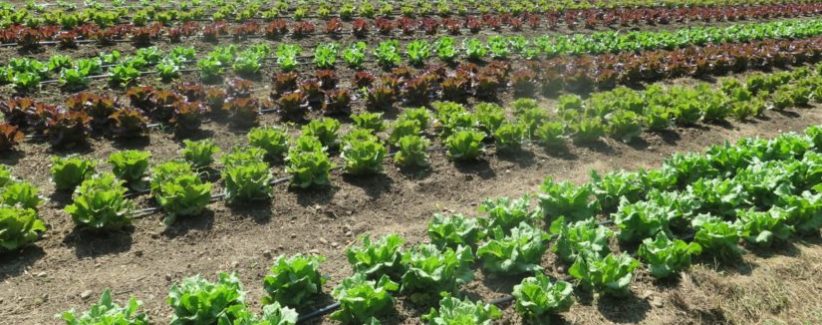Leaps and Bounds

It is magical to watch the ebb and flow of farm activities throughout the season and the improvements in production annually. Last year was a big year from beginning to end. In 2017 we donated the most produce in five years and, for the first time, we distributed every month, January through December. Thankfully, our continually improving infrastructure now provides water, warmth, and protection for the plants and farmers year round. Another first: Lettuce was our number one crop with more than 13,000 pounds distributed almost weekly, from April through November. The usual “heavies,” tomatoes and winter squash, came in second and third due to the cooler summer. More firsts: Fresh ginger, microgreens, honey, Asian pears, and peaches were added to our crop list, which also includes asparagus, peas, sweet corn, garlic, maple syrup, and about 40 other nutritious vegetables, herbs, and fruits.
Our farm staff couldn’t have done this work without the help of our 2,600 volunteers who start out in the soggy days of April and work through the hot summer months into chilly October. With as many as 500 volunteers in a month, spring is popular for school groups eager for outdoor activities. Summer and fall are popular with community groups, corporate teams, and students seeking community service hours. Tasks vary each week and are matched with volunteer abilities. They can include planting, transplanting, watering, spreading mulch, harvesting, washing, bunching. With crops in various stages of growth, volunteers are learning about our farming methods and where the food is going while also providing much appreciated labor.
In 2017, we distributed our produce in Concord, Bedford, Devons, Maynard, Sudbury, Westford, Lowell, and Boston through partnerships with 13 hunger-relief organizations that distribute through meals, food pantries, and direct free markets. Based on feedback, we started providing weekly updates about the distributions, bagging greens for faster, easier distribution, and adding labeling so that kale wasn’t confused with swiss chard! With increased production, we constantly needed more boxes and appreciated the resupply provided by our partners and Boston Area Gleaners.
Each year we build on the previous year’s experience to improve what we grow, how we grow it together with our volunteers, and how we distribute it through our partners to families in need.